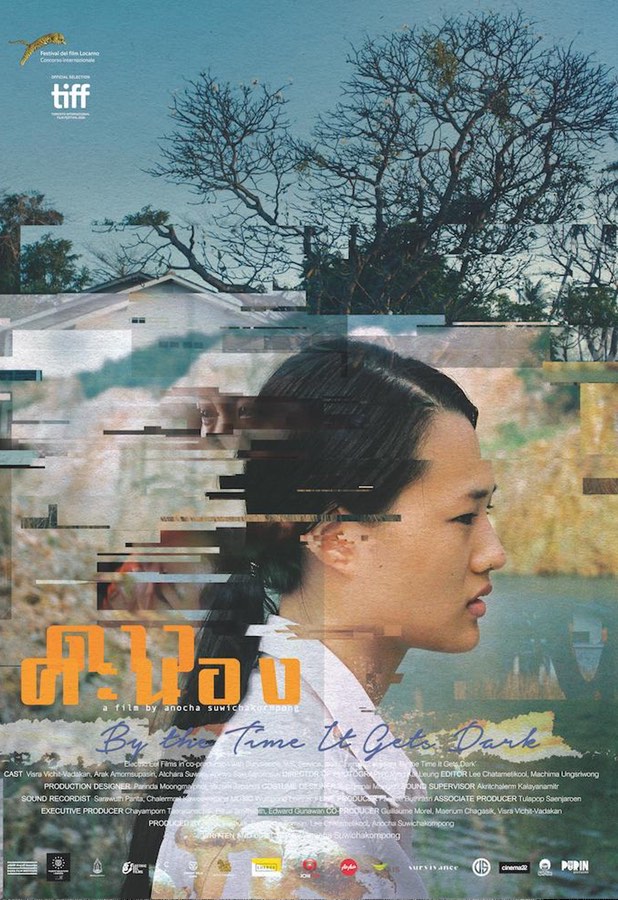« Coffee Break | Main | The Flesh »
September 18, 2017
By the Time it Gets Dark

Dao Khanong
Anocha Suwichakornpong - 2016
KimStim Region 1 DVD
By the Time it Gets Dark opens with a shot of a woman opening the glass doors to step onto a patio, while another woman to her left starts taking photos of the same outdoor scenery. Much of the imagery in Anocha's film is through windows, mirrors, or slightly obscured by the reflections on glass. There is no clear narrative as such, but a series of moments blending the self-referential with documentary footage and even a music video that opens itself up for deconstruction. A few minutes are also given to Georges Melies' A Trip to the Moon.
It's not only that Anocha weaves in and out between narrative and non-narrative filmmaking, but that the film has moments of what might be considered visual free association or tangents, as when a discussion of mushrooms eventually leads to a montage of mushrooms and other fungus, as well as the discovery of moldy bread.
The segment of the film that has gotten the most attention is of the young filmmaker, presumably modeled after Anocha, in conversation with an older woman, a student activist involved in the 1976 incident at Thammasat University in Bangkok. There is also a short scene of a dramatic recreation being filmed, with students face down on a floor, arms tied behind their backs, with the actors playing soldiers directed to be "more brutal". As one who has followed Thai cinema for more than a decade, that there is this reference to Thai history in a Thai film, in fact the film that is to represent Thailand's bid for a an Oscar, is astonishing.
Consider that Syndromes and a Century was banned in Thailand due to Thai's censors assertion that Apichatpong Weerasethakul was disrespectful to doctors and Buddhist monks, and that "Joe" also chose not have the more obviously Cemetery of Splendor not shown in Thailand. Thai censors also banned Shakespeare must Die, with the Scottish play as starting off point for a fictionalized look at Thai politics. Filmmaker Ing K. responded to the ban of her film with Censor must Die which ironically was not banned.
By the Time it Gets Dark is deeply seeped in Thai history and culture. Still, what can be gleaned is a film about memory and the production and meaning of images. Independent of any narrative concerns there is the scene with the filmmaker, Ann, running in the forest, with Anocha cross-cutting between shots of Ann running left to right, with those of her running right to left, as if she is racing against herself. In another scene, a screening viewed by some filmmakers is interrupted by the news that the star has died in a car accident. Anocha cuts to footage of the star driving, with the viewer left to decide whether we are watching a scene from a movie, or perhaps the young star taking his final drive. Near the end of the film, a young woman is dancing among the crowd in a night club, the digital image becomes more abstract until we see streaks of gray and black, finally refocusing on a quiet country scene.
Mention should also be made of editor Lee Chatametikool for his hand in the structure not only of this film, but of previous films by Anocha. Lee has also edited the films of Apichatpong Weerasethakul, as well as several more relatively conventional Thai films including the horror film, Shutter and Ghost of Mae Nak.
Posted by Peter Nellhaus at September 18, 2017 07:08 AM
